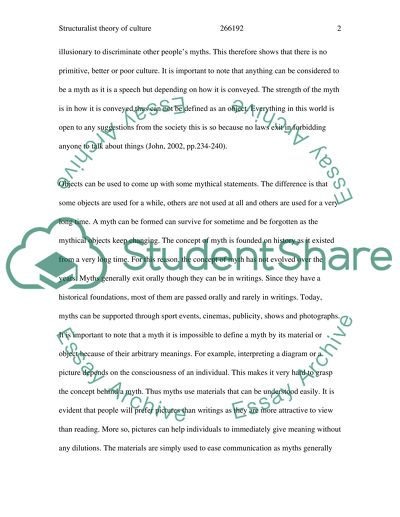Cite this document
(“The Structuralism Theory of Culture Essay Example | Topics and Well Written Essays - 1500 words”, n.d.)
The Structuralism Theory of Culture Essay Example | Topics and Well Written Essays - 1500 words. Retrieved from https://studentshare.org/philosophy/1500503-the-structuralist-theory-of-culture
The Structuralism Theory of Culture Essay Example | Topics and Well Written Essays - 1500 words. Retrieved from https://studentshare.org/philosophy/1500503-the-structuralist-theory-of-culture
(The Structuralism Theory of Culture Essay Example | Topics and Well Written Essays - 1500 Words)
The Structuralism Theory of Culture Essay Example | Topics and Well Written Essays - 1500 Words. https://studentshare.org/philosophy/1500503-the-structuralist-theory-of-culture.
The Structuralism Theory of Culture Essay Example | Topics and Well Written Essays - 1500 Words. https://studentshare.org/philosophy/1500503-the-structuralist-theory-of-culture.
“The Structuralism Theory of Culture Essay Example | Topics and Well Written Essays - 1500 Words”, n.d. https://studentshare.org/philosophy/1500503-the-structuralist-theory-of-culture.


